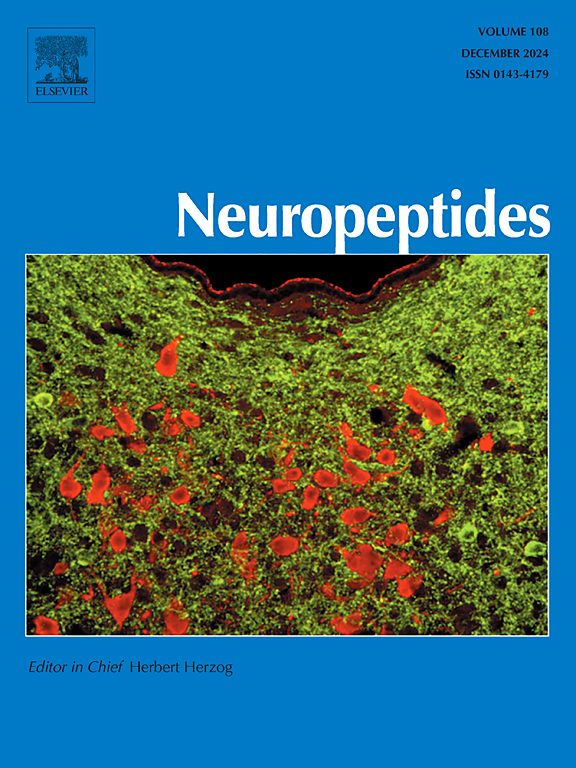Chromogranin B: A versatile neuroendocrine protein regulating physiological and metabolic functions
IF 2.7
3区 医学
Q3 ENDOCRINOLOGY & METABOLISM
引用次数: 0
Abstract
Chromogranin B (CHGB) is a key member of the granin family of acidic proteins, predominantly localized in the secretory granules of professional secretory cells, such as neurons and neuroendocrine cells. It plays a crucial role in the regulated secretory pathway, influencing hormone storage, processing, and release. CHGB's role extends from cellular processes to systemic physiology, encompassing vesicular trafficking, calcium homeostasis, and immune regulation. CHGB dysfunction is linked to pathological conditions such as neurodegenerative diseases, cardiovascular disorders, and metabolic disorders. This review examines the multifaceted functions of CHGB at both the cellular and organismal levels, highlighting its role in maintaining cellular homeostasis and its potential link to metabolic dysfunction and related pathophysiology.
嗜铬粒蛋白B:一种调节生理和代谢功能的多功能神经内分泌蛋白
嗜铬颗粒蛋白B (Chromogranin B, CHGB)是酸性颗粒蛋白家族的关键成员,主要存在于专业分泌细胞的分泌颗粒中,如神经元和神经内分泌细胞。它在受调节的分泌途径中起着至关重要的作用,影响激素的储存、加工和释放。CHGB的作用从细胞过程延伸到全身生理,包括囊泡运输、钙稳态和免疫调节。CHGB功能障碍与神经退行性疾病、心血管疾病和代谢紊乱等病理状况有关。本文综述了CHGB在细胞和机体水平上的多方面功能,强调了它在维持细胞稳态中的作用,以及它与代谢功能障碍和相关病理生理的潜在联系。
本文章由计算机程序翻译,如有差异,请以英文原文为准。
求助全文
约1分钟内获得全文
求助全文
来源期刊

Neuropeptides
医学-内分泌学与代谢
CiteScore
5.40
自引率
6.90%
发文量
55
审稿时长
>12 weeks
期刊介绍:
The aim of Neuropeptides is the rapid publication of original research and review articles, dealing with the structure, distribution, actions and functions of peptides in the central and peripheral nervous systems. The explosion of research activity in this field has led to the identification of numerous naturally occurring endogenous peptides which act as neurotransmitters, neuromodulators, or trophic factors, to mediate nervous system functions. Increasing numbers of non-peptide ligands of neuropeptide receptors have been developed, which act as agonists or antagonists in peptidergic systems.
The journal provides a unique opportunity of integrating the many disciplines involved in all neuropeptide research. The journal publishes articles on all aspects of the neuropeptide field, with particular emphasis on gene regulation of peptide expression, peptide receptor subtypes, transgenic and knockout mice with mutations in genes for neuropeptides and peptide receptors, neuroanatomy, physiology, behaviour, neurotrophic factors, preclinical drug evaluation, clinical studies, and clinical trials.
 求助内容:
求助内容: 应助结果提醒方式:
应助结果提醒方式:


